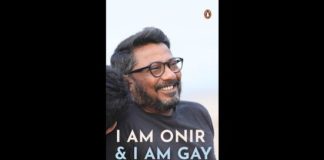
The conclusion of the 19th International AIDS Conference in Washington, D.C. left a lot of uncertainty and unanswered questions about the status of the epidemic and the chances for ending it. It, as with many things in life, is now a function of economic class.
Effective treatment must be dirt cheap to work, and the daunting task achieved of eliminating stigmas still associated with the virus. Among the haunting presentations of such challenges was Art Jones’ documentary, “13 Percent,” shown last week in D.C. to drive home that 50 percent of all new HIV infections in the U.S. are in the African-American population, which is only 13 percent of the total population. Of all new infections among African-Americans, over half now afflict women.
Harsh stigmas persist and even when the uninsured seek treatment, doctors too often don’t know that what they’re seeing may be early symptoms of AIDS. Failing to diagnose in a timely fashion can render treatments ineffective.
Larry Kramer’s effectively-performed “The Normal Heart,” played at D.C.’s Arena Stage as the conference convened last month. Written amid the exploding AIDS epidemic in 1984, among the many themes it struck was a highly-charged claim that I heard often in those days. A character in his play cites “top secret Defense Department experiments at Fort Dietrick, Maryland, that have produced a virus that can destroy the immune system. It’s code name is Firm Hand. They started testing in 1978 on a group of gays.”
Kramer was agnostic at best about this theory, but felt it needed to be mentioned in his play. Other theories about the source of the virus prevailed, and while no one is eager to adopt an unprovable conspiracy theory of that type, there are other ways in which covert, sinister policy objectives of powerful interests did shape the environment in which AIDS arose.
They involved the otherwise inexplicable shift in the national ethos following World War II. They were engineered through what I’ve called the “mainstreaming” of the radical hedonistic values of the urban counterculture, peaking in the late 1960s to blunt the growing social ferment of that era. It featured drugs and violence, targeted against the civil rights movement by flooding the nation’s inner cities with riots and heroin, and targeting against the anti-Vietnam War movement by saturating the nation’s politically-activated youth with anarchist slogans and LSD.
The “sex, drugs and rock and roll” movement was a product of an active domestic intelligence operation known as MK-Ultra. The well-documented CIA operation was uncovered during the hearings of the Church Committee in the U.S. Senate in the late 1970s. It thrust the theories and practices of radical hedonism against the heightened moral consciousness of that period. It was effective in the general population, and for the fledgling post-Stonewall gay liberation movement, it was devastating.
The impersonal, casual sexual imperative element of the offensive is what created the sociological and public health environment in major cities for what eventually manifested AIDS. Clinical sexual addiction fueled the process, compromising immune systems through repeated, chronic venereal infections and weakening physical constitutions of persons insisting on the same levels of intoxication and sex even as their bodies underwent physiological changes associated with aging. By age 27 many were physically incapable of the levels of activity as before, but ignored the signals.
In San Francisco, where I was a gay activist, I saw it over and over. Young rosy-cheeked runaways and others coming to the big gay city in order to claim a happy gay life were swept with lightning speed into the deflowering grind, exploited, raped, drugged, malnourished and often within just a couple of weeks, appearing sullen, aged and pale even on bright sunny San Francisco days. Addictions and insatiable predatory behaviors prevailed in this context, sanctioned and cheered on by the wider hedonistic environment. Sadly, when news of the strange “gay cancer’ first broke in July 1981, I was stunned, but not really surprised.
The opportunity had been created for the HIV virus to awaken from dormancy and spread, taking the lives of as many as 600,000 (the current estimate) mostly young gay lives in the U.S. alone. The hysterical denial of gay activists in the lead up to, break out of, and rapid spread of the deadly epidemic contributed enormously to the eventual magnitude of its reach.
So now, if the epidemic is going to end, so must the context that spawned it. Otherwise, who is to say what new, even deadlier virus is lurking in our ongoing urban hedonistic culture?
There is only one guarantee for ending AIDS, and that is to change our culture, not to wait for the next busted condom begin the next chapter of horror.
But the high priests of the gay establishment today are as indifferent as they were in the lead up to AIDS to the ways in which our culture depersonalizes, cripples and endangers the precious gay souls that are supposed to be in our care.








